In June 2021, we released a post about using inclusive language in grants. We’re revisiting this topic now because this is a topic that deserves ongoing attention and one that evolves over time.
According to the Linguistic Society of America, using inclusive language “avoids past pitfalls or habits that may unintentionally lead to marginalization, offense, misrepresentation, or the perpetuation of stereotypes.”
What I like about this definition is that it suggests there is always room for improvement. There’s room for improvement not only on an individual level, but on the level of the movement itself. The standards for inclusive language change with time as communities’ voices are amplified and as the mainstream pays more attention to how communities would like to be spoken and written about.
Concepts such as “people-first language” or “gender-neutral language” are part of the larger movement of inclusive language. A guideline that acknowledges the power of words to reinforce negative biases related to stigma, institutional discrimination, and othering.
Abiding by inclusive language principles and guidelines in writing promotes an appreciation of diversity and differences. Knowing how to express ideas using inclusive language is especially important for grant writers. They are often describing the experiences of people who are underrepresented or marginalized.

Why is inclusive language important in grant writing?
Using emotionally-charged, judgemental, or overly positive or negative language to describe groups of people can reinforce harmful stereotypes. It can also incorrectly present a diverse group of individuals as sharing similar characteristics.
Since inclusive language develops and changes over time, grant writers should pay close attention to the terminology that is widely used in each particular field or industry.
Reviewing a grantmaker’s theory of change or annual reports can provide insight into the foundation or organization’s preferred language and terms. You can also look at the websites of advocacy organizations that are led by people within those communities.
Broadly, there are several principles of inclusive language that can be applied to any writing topic:
1. Acknowledge privilege and societal power dynamics
The purpose of inclusive language is to counter the narratives that contribute to the marginalization and exclusion of certain groups of people. For example, when discussing the circumstances of individuals facing financial hardship, it is essential to use words and phrases that refrain from casting judgment or implying that financial instability is an innate trait.
In addition to using language that focuses on the individual rather than their circumstances, it is also important to describe the external factors that contribute or exacerbate the target population’s situation. This includes discrimination related to class, race, gender, or age, lack of infrastructure or investment, or limited access to resources.
2. Focus on facts
Many grant writers and nonprofits assume that using emotional or charged language to describe their target population’s situation will increase interest and support for their programs. This can be true. But these techniques should not be deployed to the detriment of your clients or beneficiaries.
Instead, include hard facts that paint a realistic and unsensational picture of the obstacles that your nonprofit is working to address. Putting the focus on practical and logistical barriers not only removes the blame from the individual, but also makes their circumstances more relatable.
3. When in doubt, go to the source
The only people who can judge if inclusive language is accurate or appropriate are the people who the words are describing. These terms often evolve rapidly; what may have been acceptable five years ago may not be suitable to use today.
Even within the nonprofit sector, there are commonly used terms that may not align with an organization’s values or the wishes of their beneficiaries. For this reason, stakeholders should always have a platform in conversations regarding language and how their stories are told.

Categories in inclusive language
Unless it is an integral part of your program, including specific age and demographic information shouldn’t be necessary. However, there are many instances where you will be referring to specific groups of people.
As a guide, Northwestern University has put together an non-exhaustive list of exclusionary terms and their inclusive recommendations. Some of the most commonly used categories include:
Race and Ethnicity
Ethnic and racial groups must always be capitalized and as specific as possible. If you are writing about a diverse group of non-White individuals, the term “people of color” is more appropriate than “minorities.”
Gender
Occupations should always be described in a gender-neutral manner. For example, postal worker rather than postman. Unless your program is gender-specific, avoid writing statements that exclude either gender. For example, use gender-neutral words such as “who,” “one,” or “they.” If it works grammatically, you can also remove pronouns altogether.
Always refer to specific people by their preferred pronouns. To build a culture inclusive of all genders, encourage people in your organization to include their pronouns in their email signatures and next to their names in video meetings.
Ability
Unfortunately, many words used to describe disability or people with disabilities are disempowering. Always use people-first language when describing physical or mental conditions. There are similar issues when discussing older adults. Some terms can denote frailty or weakness, even unintentionally.
Sexual Orientation
Avoid writing statements that assume sexual orientation or gender identity altogether, unless it’s part of your participant demography. Describe relationships using inclusive terms such as partner, spouse, and family rather than gendered or hetronormative definitions, like husband or wife.
What’s next
Knowing and incorporating inclusive language into your writing is an important part of realizing organizational values such as diversity, tolerance, and respect. However, this is only one of the many actions that separate nonprofits that talk the talk from those that walk the walk.
It’s important to engage your program participants in conversations about diversity, equity, and inclusion and to refer to them as they refer to themselves.
If you’re interested in building a stronger culture of inclusion in your organization, your strategic plan is a great place to start.
When I was a development director at a nonprofit I was tasked with designing a strategic planning retreat and writing the strategic plan. I spent multiple work days just researching to put together what I needed to run the retreat and write the plan. This workbook does all of that for you.







